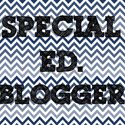Apps for Analyzing
September 23, 2012
My first set of purchases include styluses and screen protectors for all the iPads. Why some apps that I have been playing with do way better with something smaller than a finger. The screen protectors have you seen you iPhone screen??? With kids why not.
Analyzing
Apps that fit into the "analyzing" stage improve the user's ability to differentiate between the relevant and irrelevant, determine relationships, and recognize the organization of content. Verbs commonly used to describe this phase include differentiating, discriminating, selecting, distinguishing, focusing, attributing, deconstructing, structuring, integrating, outlining, and parsing.
Criteria
When locating these "analyzing" apps, consider the following questions
Does the app help the user...
1. Discriminate fact from hypothesis?
2. Distinguish the relevant from irrelevant?
3. Observe the structure?
4. Select important elements?
5. Determine biases?
6. Recognize intent?
7. Deconstruct content?
8. Understand the relationships?
9. Organize content?
10. Outline content?
Popplet: I use this for sequencing. It works by creating mind maps or brainstorming.
Strip Designer: I use for retelling. Students can create a comic strip illustrating the beginning, middle, and end. This one is not free but my students love using it.
Doodle Buddy: I use for visualization. For my students, I have then create a picture based on the "Movie playing in their mind" from a page read or if a picture book based on the whole book. (When I do this--I don't show them pictures. They create the picture and then I reread the book showing them the pictures.)
Apps may not always be free; as my goal is to create a list of apps that can be used with Bloom's Taxonomy. Has anyone had any luck with VGA cord?? I'm trying to figure out if it's worth the cost. If you have favorite apps--give them a shout out!! I'd love to hear about ones your students love using.
I also wanted to share a special education technology link with you. Click here to go to the web site. They have reviewed a ton of special education apps for just about everything you could possibly think of from autism to speech/language to basic skills to help work on IEP goals.

Analyzing
Apps that fit into the "analyzing" stage improve the user's ability to differentiate between the relevant and irrelevant, determine relationships, and recognize the organization of content. Verbs commonly used to describe this phase include differentiating, discriminating, selecting, distinguishing, focusing, attributing, deconstructing, structuring, integrating, outlining, and parsing.
Criteria
When locating these "analyzing" apps, consider the following questions
Does the app help the user...
1. Discriminate fact from hypothesis?
2. Distinguish the relevant from irrelevant?
3. Observe the structure?
4. Select important elements?
5. Determine biases?
6. Recognize intent?
7. Deconstruct content?
8. Understand the relationships?
9. Organize content?
10. Outline content?
Popplet: I use this for sequencing. It works by creating mind maps or brainstorming.
Strip Designer: I use for retelling. Students can create a comic strip illustrating the beginning, middle, and end. This one is not free but my students love using it.
Doodle Buddy: I use for visualization. For my students, I have then create a picture based on the "Movie playing in their mind" from a page read or if a picture book based on the whole book. (When I do this--I don't show them pictures. They create the picture and then I reread the book showing them the pictures.)
Apps may not always be free; as my goal is to create a list of apps that can be used with Bloom's Taxonomy. Has anyone had any luck with VGA cord?? I'm trying to figure out if it's worth the cost. If you have favorite apps--give them a shout out!! I'd love to hear about ones your students love using.
I also wanted to share a special education technology link with you. Click here to go to the web site. They have reviewed a ton of special education apps for just about everything you could possibly think of from autism to speech/language to basic skills to help work on IEP goals.

Labels:21st Century,technology
Subscribe to:
Post Comments
(Atom)

About Me
Welcome to my all thing special education blog. I empower busy elementary special education teachers to use best practice strategies to achieve a data and evidence driven classroom community by sharing easy to use, engaging, unique approaches to small group reading and math. Thanks for Hopping By.
Resource Library
Thank you! You have successfully subscribed to our newsletter.
Search This Blog
Labels
21st Century
Autism
Bloom's Taxonomy
DIBELS
ELL strategies
Formative Assessment
Fountas and Pinnell
Guided Reading
IEP
Just Words
Progress monitoring
RTI
Reading Comprehension
Wilson Reading System
apps
back to school
beginning readers
best practices
books to read
classroom
common core
comprehension
data
differentiation
fluency
freebie
intervention
lesson plan
math
parents
phonics
reading
small group
special education
teaching
technology
vocabulary
writing











0 comments:
Post a Comment